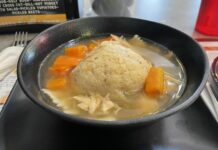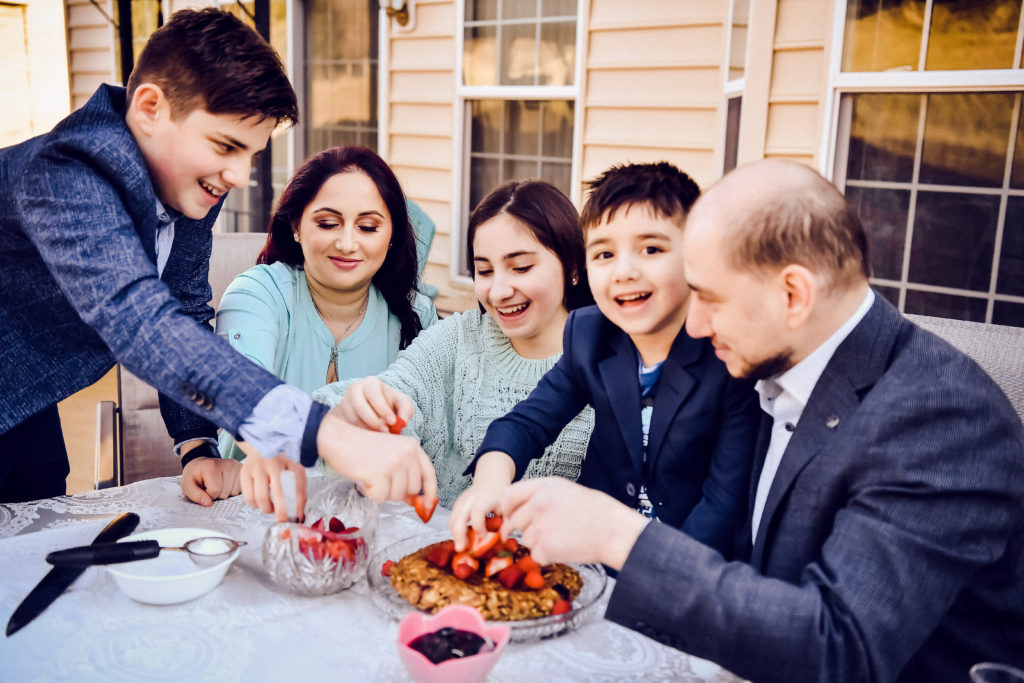
Celebrated at home, Passover, perhaps more than any other Jewish holiday, provides space for families to create their own customs and rituals.
A Moroccan family may pour wine into a bucket to mark the 10 plagues. A Brazilian family might bake Passover dishes with yuca flour. And then, if their descendants immigrate to the United States, they might bring those traditions with them.
Families from across the country shared their Passover customs and recipes and the stories behind them.
A celebration that survived the Soviet Union
By Selah Maya Zighelboim
Polina Mirskiy’s early Passover memories are of smuggling matzah.
In communist Moldova, a country that had been part of the Soviet Union when Mirskiy was a child, Jewish people weren’t allowed to practice their religion. She and her family quietly celebrated a version of the holiday. They didn’t have elaborate seders complete with rituals, but they would have a special dinner with her grandparents, and they would have matzah.
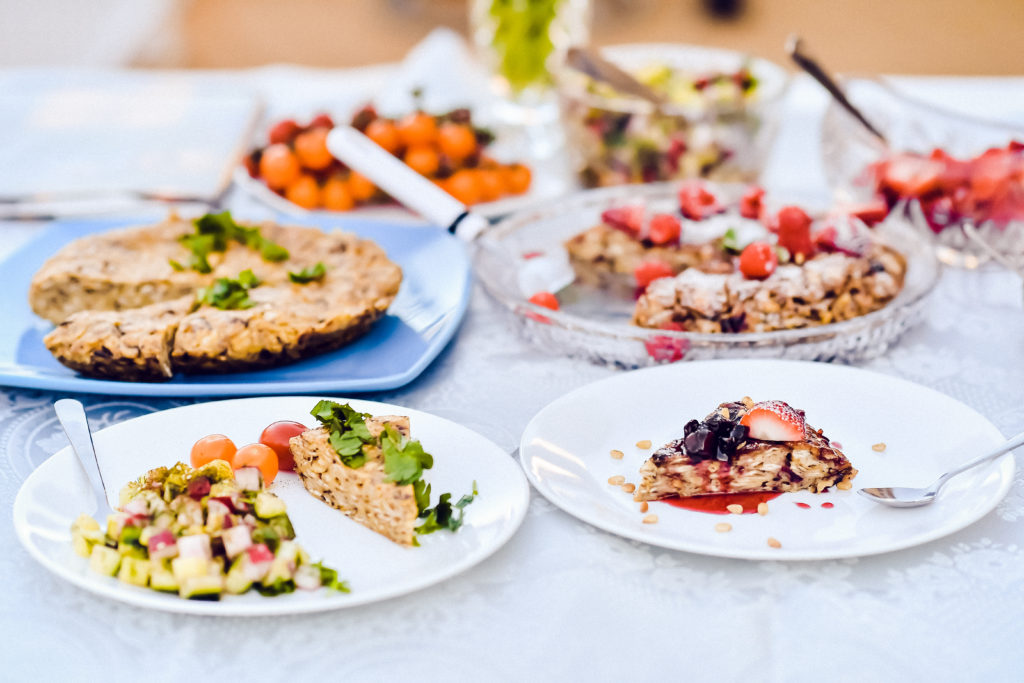
“Everything was hidden,” said Mirskiy, the owner of Amber Room Day Spa in Pikesville. “It was everything quietly, but overall, that matzah, we all remember crunching it and having it there.”
Mirskiy’s father would bring flour to a synagogue in Kishinev, the capital of Moldova, where they would bake matzah. They would then pile boxes of it into the car and drive six hours to Ukraine, where Mirskiy’s paternal grandparents lived.
Her grandmother would do a lot of cooking with the matzah. One of her recipes was matzah babka, a versatile Eastern European dish similar to matzah brei.
It’s a dish that Mirskiy still makes for Passover, which she now celebrates with her family in Owings Mills. She lives with her husband, Denis, whose family is from Belarus, and their three children, Michael, Jessica and Alex, who are students at Beth Tfiloh Dahan Community School. Her children lead the seder for the family and teach her and her husband the Passover traditions, and she brings her family’s recipes.
“It brings the generations together,” Mirskiy said.
Polina Mirskiy’s savory matzah babka
8 pieces of matzah, broken into quarter-size pieces
4 extra-large eggs, cracked separately one by one to check for blood spots
2 cups hot water
1 tablespoon kosher salt
¼ teaspoon ground black pepper
¼ teaspoon sweet paprika
¼ teaspoon sugar
¼ cup neutral oil
Optional: 1 medium onion, chopped and sauteed until golden brown
Break the matzah into a large bowl, and pour the hot water on it. Let soak for 2 minutes.
While the matzah is soaking, break and whisk the eggs in a separate bowl.
Add the salt, pepper and sauteed onions to the egg mixture. Mix and add to the matzah and water bowl. Mix everything with a spatula.
Preheat a medium-size skillet (10 inches), add the oil and gradually add the matzah/egg mixture to the heated skillet. Flatten the mixture with the spatula so it is even. Let it brown on one side on medium heat for about 5-7 minutes.
Oil a large plate or flat skillet lid that is a little larger than the skillet you are using and cover the skillet with it. Quickly flip the babka on the platter and slide it back carefully onto the skillet again. You should have a nice crust on top.
Lower the heat and cover with a lid for an additional 5-7 minutes, until the eggs cook through.
Slide the cooked babka on a serving platter. Let cool for a few minutes, slice into triangles and serve warm or cold.
Serve with a fresh cucumber, radish, green onion and chopped dill salad; works with dairy, pareve or meat dishes.
Polina Mirskiy’s sweet sour cherry matzah babka
8 pieces of matzah, broken into quarter-size pieces.
2 cups hot water
4 extra-large eggs, cracked separately one by one to check for blood spots
¼ cup oil
½ teaspoon vanilla
Optional: ½ teaspoon cinnamon
½ cup sour cherry preserves (can be substituted for any fruit preserves or honey)
Optional: ½ cup pine nuts or chopped nuts of choice (for best flavor, heat up the nuts on a small skillet without oil, constantly mixing for a few minutes and being careful
not to burn them)
2-3 tablespoons sugar
¼ teaspoon salt
Powdered sugar and more of the preserves for topping
Break the matzah into a large bowl and pour the hot water on it. Let soak for two minutes.
While the matzah is soaking, break and whisk the eggs in a separate bowl.
Add the sugar, cinnamon, vanilla, preserves, pine nuts and salt into the egg mixture. Mix everything with a spatula.
Preheat medium-size skillet (10 inches), add the oil and gradually add the matzah/egg mixture to the heated skillet. Flatten the mixture with the spatula to be even. Let it brown on one side on medium heat for about 5-7 minutes.
Oil a large plate or flat skillet lid that is a little larger than the skillet that you are using and cover the skillet with it. Quickly flip the babka on the platter and slide back carefully onto the skillet again. You should have a nice crust on top.
Lower the heat and cover with a lid for an additional 5-7 minutes, until the eggs cook through.
Slide the cooked babka on a serving platter. Let cool for a few minutes, slice into triangles, drizzle with some more of the cherry preserves, sprinkle some powdered sugar and more of the nuts and enjoy.
Serve warm or cold with a side of fresh berries. It tastes delicious with honey as well.
Preserving Moroccan traditions
By Adam Reinherz
Each Passover, for years, Abraham Azagury’s family read the Haggadah in Ladino, a language influenced by Spanish, Hebrew, Greek and Turkish. Next week, Azagury, a resident of Pittsburgh’s Squirrel Hill neighborhood, will continue that family tradition — along with some adaptations his father instituted decades ago.
“My father’s parents, who were from Morocco, would read the entire Haggadah in Ladino,” said Azagury. When Azagury was a child, though, his father, who lives in France, only read certain portions in Ladino.
“You have to keep the kids interested,” said the son.
The essence of the seder is recalling history in meaningful ways for younger generations. So, in addition to reciting “Mah Nishtana” and “Ha Lachma Anya” in Ladino, and telling the story of the Exodus, Azagury has other plans to honor his Moroccan heritage and pass it on to his children.
At the evening’s start, Azagury will lift the seder plate above each person’s head and say, “Bibhilu yatzanu mi–mizrayim” (“in haste we went out from Egypt”). Later, when recalling the 10 plagues brought against the Egyptians, Azagury, like his ancestors, will mention each plague in Ladino, then pour wine into a bucket while his wife and their children pour water into the same container. After 10 spills of wine and 10 spills of water, the Azagurys will dump the liquid into the toilet, thereby discarding the negative association of the wine/water combination.
Azagury is looking forward to Passover and spending it with his family, but also understands that customs should reflect not just history, but also the present. One of his father’s traditions, which is followed by some Moroccans, is avoiding fish and chicken throughout the holiday because those animals consume grain (chametz) and there is a possibility of remnants in their intestines.
Azagury’s practice of avoiding fish and chicken ended the day he got married: “My wife said, ‘We’re not only eating potatoes on Pesach.’”
Brazilian-style baking for Passover
By Shannon Levitt

Describing herself as Afro-Latina, Brazilian and Jewish, LT Ladino Bryson of Tempe, Ariz., values her heritage and wants to ensure that her sons do, too.
“Continuity is so important,” she said. “You learn from your past and create your own traditions to pass down. But I want them to understand their legacy, and it’s a fight to do that.”
Her sons, 6 feet 4 inches tall and Black, “are going to be different no matter where they go,” she said. Anything she can do to help them “stay close to their roots and feel special about it,” is worthwhile.
And Passover represents the perfect time to reflect on the past and connect with family traditions. Just smelling the pão de queijo, cheese puff balls, and other holiday dishes invoke memories of Passover.
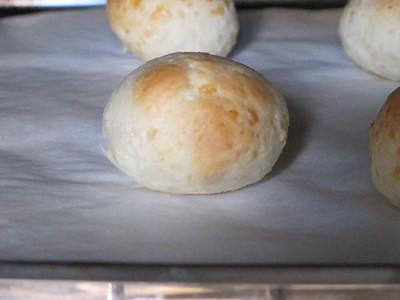
She laughs remembering the first time her family shared a seder with an Ashkenazi family where chicken was served. Growing up Sephardic, her sons had never experienced a seder meal without roast lamb. They were not fans, she said, and feels pretty confident that once they’re married with families of their own, lamb will remain a staple. But it’s the specifically Brazilian favorites she hopes they’ll keep baking, always remembering “Mama did it best.”
Brazilians have it a little easier during the holiday when it comes to baking, she said. Yuca flour is common in Brazil given that it comes from the storage roots of the cassava plant, a native species. Pão de queijo is light and fluffy — “this round golden goodness,” she said. “It is so light and crisps so well,” she said.
Pão de queijo
3 eggs
1½ cups oil
1½ cups milk
3 cups tapioca flour (yuca flour)
2 cups grated Parmesan, cheddar and/or mozzarella cheese
1 teaspoon salt or to taste
Preheat oven to 400 F.
Mix all ingredients with a blender or food processor until smooth. The resulting batter should be sticky.
Use a tablespoon to separate the dough and roll it into balls. Put them into baking cups or a muffin tin.
Bake for 15-20 minutes or until the balls become puffy and just lightly browned.
Remove from oven and let cool before removing them from the tin and eating.
Serve at any time during Passover.
Yemenite soup for the seder
By Sophie Panzer
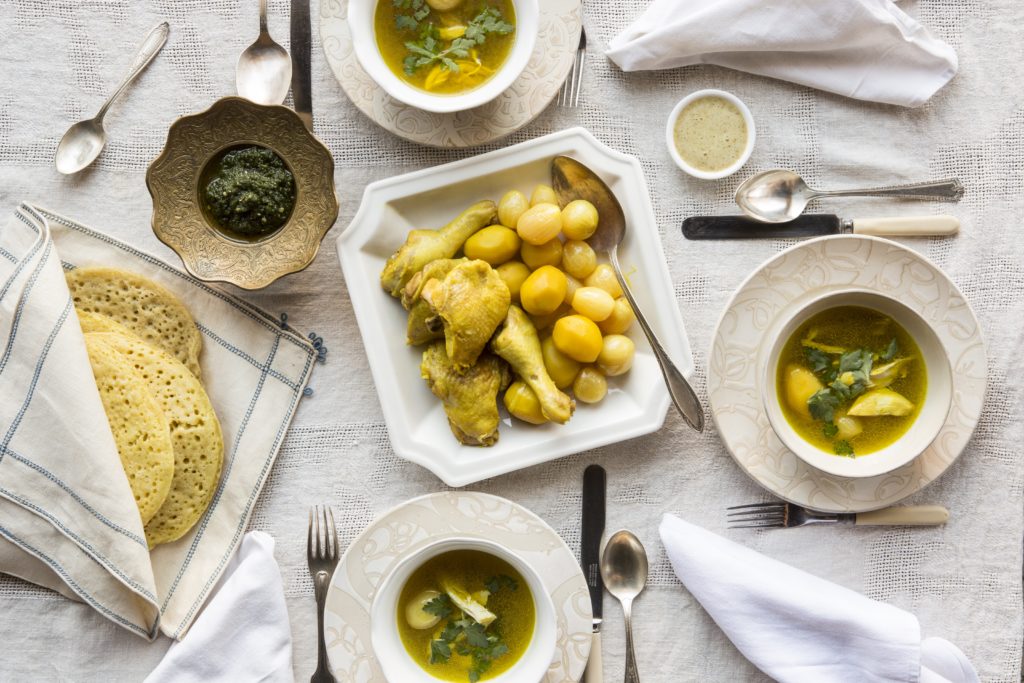
When Ronen Koresh was growing up in Israel, gathering for the Passover seder with his large extended Yemenite Jewish family was an exciting occasion.
“We would get together at my grandparents’ and family would join in from everywhere, and it was huge,” said the choreographer and owner of Koresh Dance Co. in Philadelphia.
Koresh said his grandparents followed traditions closely, from reclining on pillows throughout the meal to making sure the Haggadah was read in its entirety.
It was a long time for a small boy to wait for the festive meal, but it was worth it when his relatives brought out the food. In addition to symbolic Passover dishes like matzah, Yemenite soup was a seder table staple.
“A soup, in the Yemenite tradition, is pretty much a full meal,” Koresh said. “It’s either beef or chicken, and primarily what makes it so special is the spices.”
His mother and grandmother cooked the dish with hawaij, a blend of ground spices including black pepper, cumin, turmeric and saffron.
“So back then, actually, for my mom and my grandmother, and the family members who cooked, everything was made by hand,” he said. “So they were crushing spice, they had a special rock and they blended it themselves.”
Yemenite soup is usually served with flatbread, but diners crumble matzah into the broth during Passover.
Yemenite chicken soup
Serves 4
1 whole chicken (about 4 pounds)
Kosher salt
1 tablespoon plus 2 teaspoons hawaij, plus more for serving
2 tablespoons olive oil
1 onion, sliced
4 garlic cloves, sliced
2 quarts chicken stock
12 baby Yukon Gold potatoes, peeled
1 bunch ramps or scallions, sliced
Slice the chicken breasts from the bone and discard the skin; reserve the bones. Season the breast meat generously on both sides with salt and 1 teaspoon of the hawaij, put it on a plate and refrigerate. Remove the drumsticks, thighs and wings from the carcass.
Warm the oil in a large pot over medium heat. Add the onion, garlic and a pinch of salt and cook, stirring frequently, until the onion begins to soften, about 10 minutes. Add the chicken stock and the chicken pieces (except for the reserved breast meat), breast bones and carcass. Raise the heat to medium-high and bring it to a boil, skimming off any foam that rises to the surface.
Lower the heat to a simmer and add 1 tablespoon of the hawaij. Simmer for about 45 minutes, until the chicken is cooked through.
Transfer the thighs and drumsticks to a plate, cover and refrigerate. Simmer the soup for another 2 hours.
Pour the soup through a fine mesh strainer into a clean soup pot; discard the solids. Place the pot over medium heat and add the reserved chicken thighs and drumsticks, along with the potatoes and the remaining teaspoon of hawaij. Bring it to a simmer and cook until the potatoes are tender, about
20 minutes.
Add the reserved chicken breasts and ramps or scallions and simmer until the chicken is just cooked through, about 10 minutes more. Remove the chicken breasts from the soup and gently pull the meat apart using two forks. Season the broth with salt and more hawaij if you like.
To serve, transfer the chicken thighs and drumsticks and potatoes to a platter. Divide the shredded chicken and ramps or scallions among four soup bowls, ladle in the broth and serve with the platter of chicken and potatoes.
Yemenite Chicken Soup from Zahav, ©2015 by Michael Solomonov and Steven Cook. Reproduced by permission of Rux Martin Books/Houghton Mifflin Harcourt. All rights reserved


